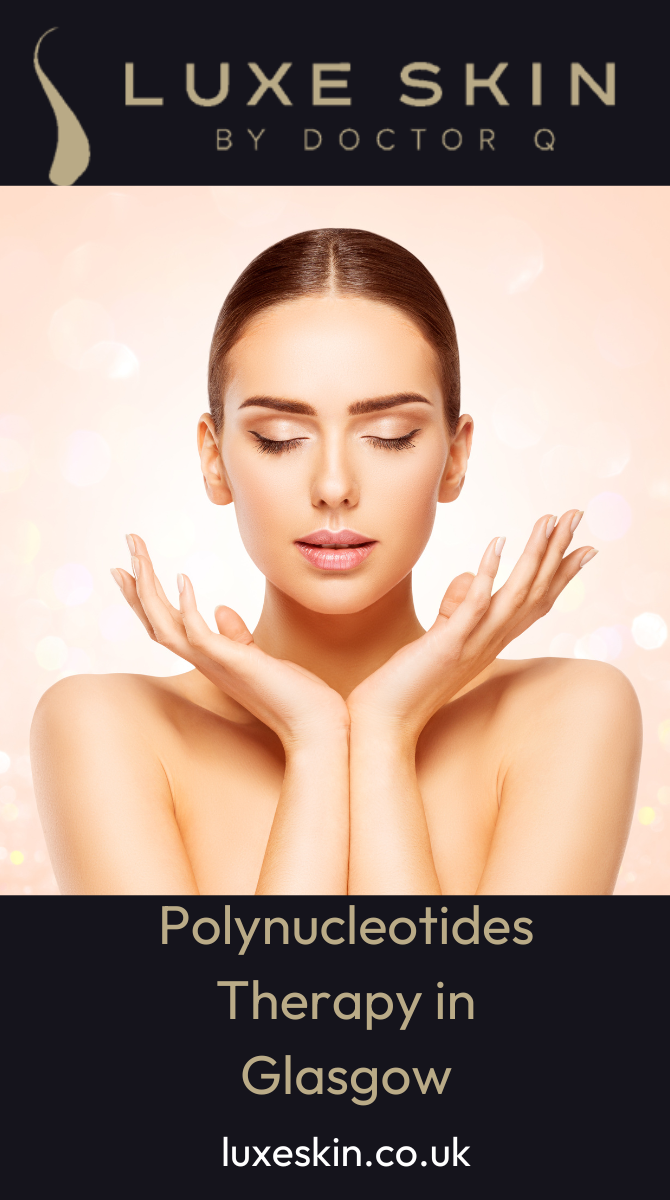These include chemical peels, microneedling and lasers. Not only can polynucleotides be used under the eyes, but they can also be injected into the eyelids to reduce the tingling sensation. Polynucleotides, or PNs, have become a promising option for rejuvenating the under-eye area. This innovative treatment harnesses the power of nucleotides, the building blocks of DNA, to stimulate collagen production and improve elasticity of the skin.
By providing a hydration boost and promoting cell regeneration, polynucleotide treatments for under the eyes can effectively reduce the appearance of fine lines, wrinkles and dark circles, returning a youthful glow to the eye area. NP treatments stimulate the body's natural regenerative processes, promoting collagen production and skin rejuvenation. This can help improve the texture, elasticity, and overall appearance of the skin under the eyes, addressing problems such as fine lines, wrinkles, and skin laxity. We all know how important our collagen levels are in the world of anti-aging, so pay attention to the following.
Polynucleotides can increase collagen production by up to 30% after two or three sessions, according to some studies. It increases hyaluronic acids and amino acids, and improves skin quality, explains Dr. Ahmed. With regard to the specific area under the eyes, he adds that it reduces dark circles and dark circles (that is, the color), can thicken the skin and can improve that shine, something very difficult to achieve with any other treatment. Both tear fillers and polynucleotides can be effective non-surgical options for treating hollows under the eyes, depending on your individual needs and preferences.
The main benefit of polynucleotide treatments for the under-eye area is their ability to rejuvenate the skin naturally from within. Unlike fillers, which add volume externally, polynucleotides help skin to regenerate, resulting in more natural and long-lasting improvements. These treatments are ideal for people looking to improve the overall quality and health of the skin under the eyes, especially those who have questions about skin texture and resilience. This is a relatively new aesthetic treatment option, at the forefront of aesthetic developments.
These injections can improve collagen production and, at the same time, promote cell rejuvenation, helping to improve skin health and the appearance under the eyes. Polynucleotides are natural polymers found in DNA that can repair damaged cells, improve hydration and promote a healthier skin structure. When concentrated in the under-eye area, polynucleotides act to increase hydration, improve elasticity and improve skin tone, producing visible anti-aging results and healthier, fresher looking skin. Although polynucleotides don't provide an immediate result like hyaluronic acid fillers do, and it takes a little patience to wait for full results, I think regenerative treatments will be great for long-term patients.
The results are usually immediate, with minimal downtime, making them an attractive option for those looking for a quick solution for tired eyes. Yes, tear filler and polynucleotide treatments can be combined to comprehensively treat cavities under the eyes. The filler is often used to fill the under-eye area, but the longevity of the injectable and the risk of it migrating were nothing to me, so the possibility that salmon sperm was my solution was intriguing. Fortunately, there are different aesthetic treatment options that can help solve this problem, reducing the appearance of swollen or hollow pimples under the eye.
They provide immediate plumping and softening effects, instantly refreshing the appearance of tired eyes. Tear fillers are ideal for combating the sunken appearance under the eyes, filling in the hollow area for a fresh appearance. Factors such as skin type, age, lifestyle and the degree of occurrence of problems under the eyes will influence the determination of the most appropriate treatment. Clare Riley, founder of Aesthetics by Clare, believes that this is a turning point in aesthetic treatments and says: “After training with the renowned Dr.
Uche on infraorbital rejuvenation, my eyes have been opened to the field of regenerative medicine in aesthetics. The combination of these treatments can lead to more natural and long-lasting results, improving the overall quality and health of the under-eye area. While I noticed that the lower part of my eyes looked less emaciated from the first session, I couldn't wait to see what benefits were behind treatment number two. The thin skin around the eyes also tends to lose collagen (the protein responsible for keeping skin firm) and elasticity much faster than in other areas, and the muscles around the eyes can also lose strength.
This is also what they offer to the under-eye area, as they help to soften the hollows under the eyes and reduce the appearance of dark circles. When choosing between tear fillers and polynucleotide treatments for under the eyes, several factors must be taken into account. In the under-eye area, polynucleotide treatments work by improving tissue repair and promoting the synthesis of key skin components, such as collagen and elastin.




